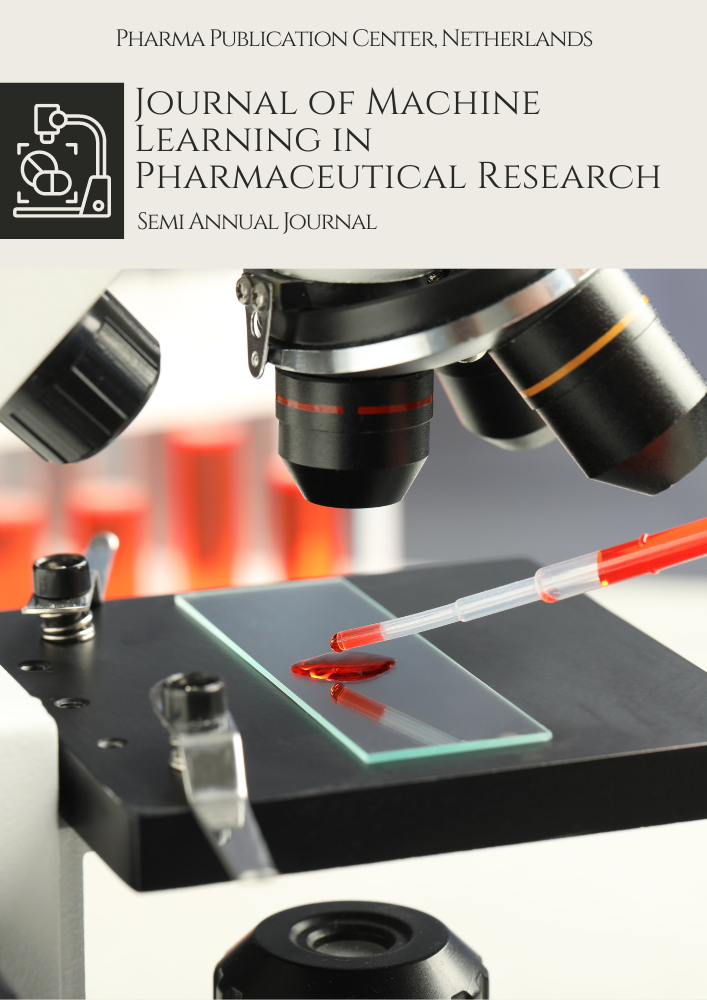Deep Learning-based Drug Response Prediction for Personalized Medicine: Implementing deep learning models to predict individual patient responses to different drugs for personalized treatment planning
Published 14-09-2024
Keywords
- Deep Learning,
- Drug Response Prediction

This work is licensed under a Creative Commons Attribution-NonCommercial-ShareAlike 4.0 International License.
Abstract
Personalized medicine aims to tailor medical treatment to the individual characteristics of each patient. One of the key aspects of personalized medicine is predicting how a patient will respond to a particular drug. This paper explores the use of deep learning models for predicting individual patient responses to different drugs. We present a comprehensive review of the existing literature on drug response prediction and discuss the challenges and opportunities in this field. We then propose a novel deep learning approach for drug response prediction and evaluate its performance on a real-world dataset. Our results demonstrate that deep learning models can effectively predict individual drug responses, paving the way for personalized treatment planning in medicine.
Downloads
References
- Saeed, A., Zahoor, A., Husnain, A., & Gondal, R. M. (2024). Enhancing E-commerce furniture shopping with AR and AI-driven 3D modeling. International Journal of Science and Research Archive, 12(2), 040-046.
- Shahane, Vishal. "A Comprehensive Decision Framework for Modern IT Infrastructure: Integrating Virtualization, Containerization, and Serverless Computing to Optimize Resource Utilization and Performance." Australian Journal of Machine Learning Research & Applications 3.1 (2023): 53-75.
- Biswas, Anjanava, and Wrick Talukdar. "Guardrails for trust, safety, and ethical development and deployment of Large Language Models (LLM)." Journal of Science & Technology 4.6 (2023): 55-82.
- N. Pushadapu, “Machine Learning Models for Identifying Patterns in Radiology Imaging: AI-Driven Techniques and Real-World Applications”, Journal of Bioinformatics and Artificial Intelligence, vol. 4, no. 1, pp. 152–203, Apr. 2024
- Talukdar, Wrick, and Anjanava Biswas. "Improving Large Language Model (LLM) fidelity through context-aware grounding: A systematic approach to reliability and veracity." arXiv preprint arXiv:2408.04023 (2024).
- Chen, Jan-Jo, Ali Husnain, and Wei-Wei Cheng. "Exploring the Trade-Off Between Performance and Cost in Facial Recognition: Deep Learning Versus Traditional Computer Vision." Proceedings of SAI Intelligent Systems Conference. Cham: Springer Nature Switzerland, 2023.
- Alomari, Ghaith, et al. “AI-Driven Integrated Hardware and Software Solution for EEG-Based Detection of Depression and Anxiety.” International Journal for Multidisciplinary Research, vol. 6, no. 3, May 2024, pp. 1–24.
- Choi, J. E., Qiao, Y., Kryczek, I., Yu, J., Gurkan, J., Bao, Y., ... & Chinnaiyan, A. M. (2024). PIKfyve, expressed by CD11c-positive cells, controls tumor immunity. Nature Communications, 15(1), 5487.
- Borker, P., Bao, Y., Qiao, Y., Chinnaiyan, A., Choi, J. E., Zhang, Y., ... & Zou, W. (2024). Targeting the lipid kinase PIKfyve upregulates surface expression of MHC class I to augment cancer immunotherapy. Cancer Research, 84(6_Supplement), 7479-7479.
- Gondal, Mahnoor Naseer, and Safee Ullah Chaudhary. "Navigating multi-scale cancer systems biology towards model-driven clinical oncology and its applications in personalized therapeutics." Frontiers in Oncology 11 (2021): 712505.
- Saeed, Ayesha, et al. "A Comparative Study of Cat Swarm Algorithm for Graph Coloring Problem: Convergence Analysis and Performance Evaluation." International Journal of Innovative Research in Computer Science & Technology 12.4 (2024): 1-9.
- Pelluru, Karthik. "Enhancing Cyber Security: Strategies, Challenges, and Future Directions." Journal of Engineering and Technology 1.2 (2019): 1-11.
- Mustyala, Anirudh, and Sumanth Tatineni. "Cost Optimization Strategies for Kubernetes Deployments in Cloud Environments." ESP Journal of Engineering and Technology Advancements 1.1 (2021): 34-46.

